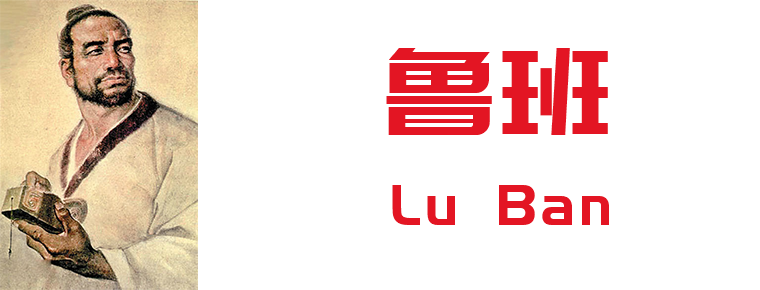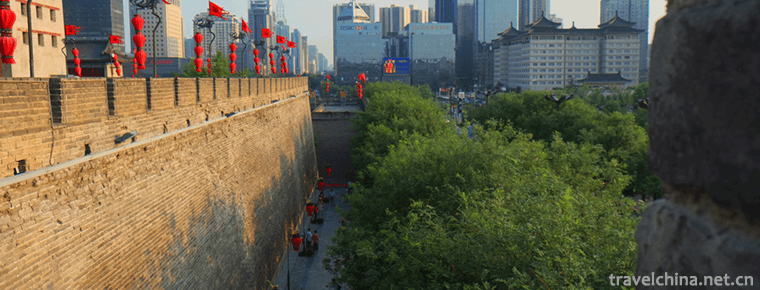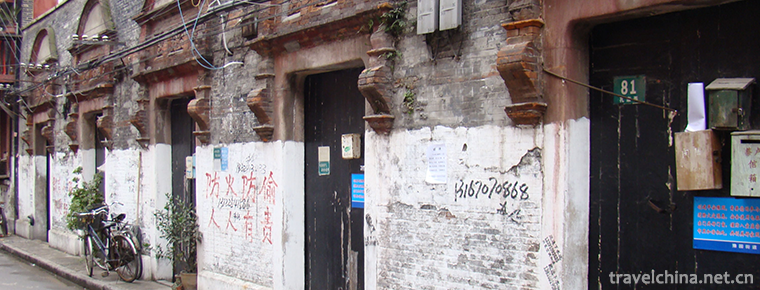Gong Shuban Lu Ban
Gong Shuban Lu Ban
Luban (507 BC - 444 BC), Lu people in the spring and Autumn period. Ji surname , a two-character surname Name, class, person. Public transport plate , Public like , Class lose It is also known as "Lu pan" or "Lu pan". Lu Du Commonly known as " Luban " Luban's name has actually become a symbol of the wisdom of the ancient working people.
Over the past 2400 years, the collective creation and invention of the ancient working people have also been concentrated on him. Therefore, the story about his invention and creation is actually the story of the creation and creation of the ancient Chinese laboring people. Luban's name has actually become a symbol of the wisdom of the ancient working people.
Paul Mauriat's History
Luban, Ji surname , a two-character surname The name is the same. also called a two-character surname Children, public transport, ban, Lu. Lu people in spring and Autumn period. The homophones of "class" and "class" are commonly used in ancient times, so people often call him Luban. Born in the thirteen year of Zhou Jing Wang (507 BC), he died in twenty-five years (444 BC). He lived in the early spring and Autumn period to the early Warring States period. He came from a family of generations of craftsmen, and he followed his family to many civil engineering works. He gradually grasped the skills of productive labor and accumulated rich practical experience.
About 450 BC, he came from Lu Come Chu China helps Chu to make weapons. He made a ladder to prepare for attack. State of Song , Mo-tse Far away from Lu For ten days and ten nights, he went to the capital of Chu state, and argued with Luban and Chu king to persuade the king of Chu to stop attacking the Song Dynasty.
Woodworking Masters Hand tools Such as drill , Plane , Shovel , Carpenter's Square Scribing Ink fountain They are said to have been invented by Luban. And the invention of every tool.
Luban was inspired by the practice of production and studied through repeated experiments.
Invention and creation
Woodworking tools
" Pearl of things "," Yuan Yuan, " Gu Shi Kao Many other ancient books, such as many tools and equipment used by carpenters, were created by him. Carpenter's Square (also called Moment or carpenter's square Again, Ink fountain , Plane Drill, Saw All the legends of tools were invented by Luban. The invention of these woodworking tools enabled the craftsmen to be liberated from the primitive heavy labor, and the efficiency of labor was doubled. Later, in order to commemorate this great master, he was regarded as the ancestor of Chinese civil craftsmen.
(1) saw
Legend saw that the saw was invented by Luban. In fact, according to archaeologists, people living in China would have processed and used stone sickle and clam sickle as early as in the Neolithic age. These are the rudiments of saw. In the Zhou Dynasty, hundreds of years before Luban's birth, copper saw has been used, and the word "saw" has already appeared.
It was said that once he went into the mountains to cut trees, he accidentally slipped and his hand was scratched by the leaves of a wild grass. He bled the bleeding. He took off the leaves and touched them gently. There were sharp teeth on both sides of the leaves. He used these dense little teeth to stroke lightly on the back of his hand and cut a hole. His hands were scratched by these small teeth, and Luban was inspired by this matter. He thought, if such a toothlike tool, can not also quickly cut the trees? So, after many experiments, he finally invented the sharp saw, which greatly improved the work efficiency.
(2) a ruler
The earliest name of the ruler is "moment", also known as Lu Ban Chi. Legend is that Luban invented it.
"Mo-tse - Tian Zhi Shang" said: "the wheel maker takes his rules to the square of the world." Rules, that is, compasses and ruler. The ruler is composed of a ruler handle and a wing, perpendicular to each other and perpendicular to each other, and the ruler is shorter than one foot. It is mainly used for measuring. The length of the ruler is indefinite and the longest is twice the size. It is mainly used for measuring the right angle and the balance line. Carpenters measure the right angles, planes, lengths and even lines with a ruler.
(3) Mo Dou
Ink fountain It is a tool used by woodworking for wire drawing. It was invented by Luban. This tool is used for storing ink in a bucket box. The rope is dyed through one end through the ink hole. The end of the dyed string is a small wooden hook called "ban Mu", which was invented by Luban's mother. The class mother is usually about one inch above the ground. After fixation, the colored line is springing to the ground, and the site is used as the horizontal straight line standard. It can also be fixed at the height of the class mother, the ink draped, and the weight of the ink will be used to force the colored rope to move to the wall, which is the standard of the straight line. After that, the stony master took the shape of the rock collected by the bucket line, and knocked off the unwanted parts with other tools to form the stone material, such as feldspar, feldspar, and so on.
Ancient weapons
hook And ladder are weapons commonly used in the late spring and Autumn period. Mo-tse Lu asked Luban to restructure his hook. Cheng Zhou In the battle of war, the army of Chu used this device to carry out a water battle with the Vietnamese army. When the boat retreated, it caught it. " Mo-tse's public transport Then he reformed the ladder into a volley. Aerial ladder To attack the city.
(1) Aerial ladder
Aerial ladder It is an ancient instrument used to attack the city. Legend is that Luban invented it. The following is a related record: "Mo-tse public loss" records: "the public transport plate for the Chu to build the ladder ladder weapon, Cheng, will attack the song". "Zhan Guo CE, the public transport tray for Chu set machine chapter" written by Mo-tse when he saw the public, he said: "Wen Gong is the ladder of clouds". "Huainan Zi" said: Luban is like a public servant, Chu people also. He is a clever man of heaven. He can make clouds ladder. Xu Zi Shen, the son of Huainan army, said: "the ladder can be built on cloud, so we can see the enemy's city".
(2) hook strength
" Hook strength It is also known as "hook rejection" and "hook giant". It is a fighting tool used in ancient water warfare, which can hook or obstruct enemy warships. The legend is invented by Luban. The following are related records. "Mo-tse Lu asked": "the Chu people and the Vietnamese boat fight in the river, and the Chu people go forward in the same direction, go back to the stream, see the right way, and see the disadvantage. The more people flow into the flow, the faster they will go forward, the more they will lose their speed. From the south of Shandong to the Chu, how did he start to serve as a vessel for war? As a strong hook, the retreating hook was strong and the strength of the hook was strong, and the strength of the hook was stronger than that of the Chu army.
Agricultural machinery
The invention and adoption of advanced agricultural implements is one of the important conditions for the development of agriculture in ancient China. " World Edition "Luban made stone," he said. Rice hulling , mill , Grind These grain processing machinery was very advanced at that time. In addition, Gu Shi Kao It is recorded that Luban made the shovel.
Stone mill
According to the records of the world, Stone mill It was invented by Luban. Legend has it that Luban used two hard stones to be chiseled into shallow grooves, which were combined together to turn the rice flour into powder by manpower or animal power. This is what we call grinding. Before that, people processed grain to put grain in. Stone mortar With the pestle to pound and pound, the invention of the mill changed the movement of the upper and lower movements of the pestle and mortar so as to turn the intermittent work of the mortar and mortar into continuous work, greatly reducing the labor intensity and improving the production efficiency. This is a great progress of the ancient grain processing tools. Luban found that the real situation of grinding has not been examined, but from the archaeological excavation situation, the Longshan culture period (about four thousand years ago) already had a pestle, so it was possible to invent the mill in Luban's era.
Other inventions
(1) machine seal
" Book of Rites "He wrote" mechanical seal "and buried it in mechanical way. Ji Kang Zi The mother's skill is convincing. But the prevailing burial at that time was not adopted.
(2) carving
" Description of differences Luban wrote the "Kyushu map" on rocks, which is probably the earliest stone carving map. In addition, in ancient times, Luban was also said to have carved exquisite stones. Phoenix
(3) umbrella
Luban's wife is also an excellent craftsman. She is said to have invented the umbrella. It is said that Luban's wife, Yun's wife, was pitied by Luban in the stormy and scorching sun. He saw that the pavilion could shelter from the rain. So he came up with a movable pavilion for Luban to bring around, making umbrellas. Paper appeared only in the Han Dynasty. The earliest umbrella could not be paper.
(4) well drilling
"Ancient people draw water from the ground, draw it from the bottle, and call it a well." It is said that the first person to dig water out of the ground is Shun emperor. The first person to play a deep well in the mountain area is Luban, the founder of the hundred works. Perhaps people's desire for "Yao Tian Shun sun" is more than anything else. Shun well There are many people, and pay attention to the few people in Luban well.
Distant water is insoluble. Mankind's demand for water has always been "drinking" and "drinking" the lake by the river. In the early days, the water well was not very particular. The big mouth and small bottom were not round, but at best they could only be regarded as an emergency water pit. It was Luban who invented the technique of drilling well before the shaft wall appeared.
Shijing, a brick masonry building, built brick wells with brick blocks, with Tao ring wells connected with ceramic rings, and ash wells that were smeared with sand ashes and wood wells with wood frames. Only then did we know how to build wells and prevent sewage from flowing into wells.
Legend
The pulley was also invented by Luban. In those days, Luban saw the villagers pick up a crock and picked up a group of rope to go up the well platform. When he took a long time to pick up a pot of water, he felt that the villagers were too hard. So they came up with the idea of pulling the pulley. Windlass The windlass turned into a windmill, and the windmill turned into a water wheel. So it turned around and turned over for more than 2000 spring and Autumn Periods.
(5) lock key
stay King Mu of Zhou It's already simple. Lock key Shaped like a fish. The key and key of Luban's improved key are to be opened up and replaced by the guards.
Legends and anecdotes
Bent by Mo-tse
Legend has it that Luban invented the "hook" and "rejection" for the navy of Chu state. When the enemy was at a disadvantage, "hook" could hook the enemy's ship and not let it escape; when the enemy was in an advantageous position, "refused" could resist the enemy's ships and let it pursue. Chu army had a hook and refused to win. Luban was also worthy of being an expert in military industry. One day, Luban turned to Mo-tse Boast, "I have the hook and the refusal of a boat war. Is there any hook or rejection for your righteousness?" Mo-tse advocated peace and war, and encouraged people to respect, love, and be supremacy. Then he answered, "I use love to hook me and refuse to use compliments." If you use hooks, others will hook you; if you refuse to refuse, you will be refused. You say "righteousness". Hook rejection Is it not stronger than the hook of the boat? Luban was speechless.
Luban came up with his invention: one. Wood Magpie It can fly for three days without landing. Mo-tse said, "this wooden magpie is not as good as a car cut by an ordinary craftsman in an instant. axle The car can bear fifty stones, and what does your magpie do? What carpenters do is good for people to call it ingenious. After listening, Luban knew very well. Mo-tse Philosophy.
Luban used to make a ladder to help Chu to attack the Song Dynasty, and Mo-tse came to block the troops. In the palace of the king of Chu, he took the clothes as the city, took the bamboo pieces as the instrument, and fought with Luban. Luban's siege instruments were exhausted. Mo-tse's way of defending the city was more than enough. Eventually Luban was convinced, but Chu also gave up the attack on song.
Having eyes but not knowing Tai Shan
As the saying goes, "Taishan without eyes" is not the Taishan of Shandong. Here is a little story.
The carpenter's master is Luban, who is very skillfully craftsmanship. Legend has it that he used wood to make birds, flying in the sky for three days and three nights. It is such a high person who also has a look. Luban recruited many apprentices. In order to maintain his reputation, he regularly inspects and eliminates some people. One of them, who is called Taishan, looks awkward. He has been here for some time, and his craft has not advanced much. So Luban has swept him out of the house. A few years later, Luban wandered around the street, and suddenly found that many well made furniture were very popular. Luban thought who this man was, so amazing, someone told him on the side: "your apprentice, Taishan." Luban said with emotion, "I really have eyes and I don't know mountains."
Related Legends
Idioms "have eyes but fail to understand mountains", have similar eyed idioms but have different usage. For example, to describe someone as unintelligent, you can say: you are stupid, meaning that your mind is not very flexible; but if you are stupid like a pig, you will be very stupid and have very angry feelings in it.
Display one's slight skill before an ecpert
Modern idioms " Display one's slight skill before an ecpert "Is also an idiom related to Luban. It means to dance the axe in front of Luban. Metaphor shows off in front of experts. Too big for her skin This idiom is sometimes used as a self effacing word, which shows that he is afraid to show off his own skills in front of an expert.
Character influence
Luban classics
In ancient China, the history of architectural technology was rarely recorded, and most of them were handed down from the past in the form of oral instruction and money order. There are few specialized books compiled by the craftsman himself. Woodworking in early Song Dynasty Yu Hao He was once a "Mu Jing", but it has long been lost. Only a few fragments are kept in Shen Kuo's " Mengxi pen conversation In. Only the Ming Dynasty's Luban Sutra is a special book of folk woodworking industry. It has several editions and has important historical value. The predecessor of this book is Ningbo Tianyi Pavilion The "middle of the Ming Dynasty" (about Luban as a "French building" between 1465 and 1505) is now incomplete. It is characterized by its content only in buildings, such as general buildings, pavilions, Zhong Lou, pagodas, livestock stalls, etc., excluding furniture, farm implements, etc. The arrangement sequence is more logical. First, it discusses the horizontal and vertical tools, the common site and section beams, and then the special type buildings and architectural details, such as hump and drooping fish. In addition, there are more illustrations, supplemented with the characters, and have preserved many techniques in the song and Yuan Dynasties. Tianyi Pavilion After more than 100 years, Wanli was renamed. Luban's mirror " There are great changes in content and layout, but there are twenty-one pages missing. Later, according to the end of the Ming Dynasty, Chong Zhen This is the complete picture of the book. After that, they were all derived from Wanli or Chong Zhen Ben. The main spread of Luban's Scripture is in Anhui, Jiangsu, Zhejiang, Fujian and Guangdong. The existing editions of Luban's creation and various versions of the Luban classics are mostly printed in this area. The Ming and Qing Dynasties folk architecture and wooden decoration, furniture, and many of the preservation. Luban classics The fact that the record is identical or similar proves the wide scope of its circulation and its normative role in engineering practice. In addition, some literati wrote books in the Ming and Qing Dynasties, with the title of "Luban" two words. For example, "Lu as a formal creation", the existing Tianyi Pavilion in Ningbo is the only remaining book, with the title of "Lu", as well as "the mirror of Luban by the craftsmen", "engraved by the new engraved board engineer, the official mirror of Luban, the mirror of Luban", and so on. The last three titles are a book. The earliest version is the Ming Dynasty Wanli edition "Luban's mirror of the master's home", at the the Imperial Palace Museum in Beijing. The version of the Ming Dynasty was also followed by the Chong Zhen edition, which was originally stored in the Beijing library and the Nanjing library. However, the collection of the Nanjing library was lost at the latest in 2002. Others were the biography of the Qing Dynasty and the Republic of China.
Luban prize
Luban prize The "Luban prize" for the construction project "Luban prize" was established in 1987 by the China Federation of construction industry. The award is an industrial honorary award and belongs to the folk character. At that time, the annual amount of 20, there are strict selection and reporting, assessment procedures, and strict discipline. The review work is carried out by the jury. The Accreditation Committee consists of 21 members. The judges must be experts with advanced technical titles, familiar with engineering technology and professional skills. In July 1996, according to the decision of the Ministry of construction, the government was set up and implemented in 1981. National Quality Engineering Award Combined with the Luban prize for the construction project, the name of the award is set. China Construction Luban prize (national high quality project). Once a year, the award amount is 45 per year. In May 15, 2000, China Construction Association A new Luban prize (national excellent) selection method for Chinese construction projects was released, and 80 Luban prize projects were selected annually.
Establishment and award
The Luban prize was awarded by the China Federation of building industry in 1987. In 1993, with the cancellation of the Federation, it was transferred to the China Construction Industry Association. In 1996, according to the decision of the Ministry of construction on the "two awards in one", the national high quality project award and the construction project Luban Prize were merged, and the award was awarded the Chinese construction project Luban prize (Guo You) project. The award is the highest honor award for engineering quality in China's construction industry. It is awarded by the Ministry of construction and the China Construction Association.
reward
The Ministry of construction and the China Construction Industry Association hold the annual awards meeting. The major contractors who have won the Luban prize to Luban are awarded the gold statue, the medal and the certificate of winning the award. The major participating units that awarded Luban prize have awarded medals and prizes, and have commended the awarding enterprises. The major contractors can set up a unified honor mark in the awarding project. The relevant regions, departments and winning enterprises can award the winning enterprises and relevant personnel according to the actual situation of the region, the Department and the enterprise. The China Construction Industry Association is responsible for organizing the editing and publication of the "China Architecture Engineering Luban prize (national high quality project) Award project album", awarding the awarding projects and awarding enterprises to the history of China's construction industry.
Luban Memorial Hall
Luban memorial hall is located in Longquan square, Tengzhou, Shandong. It covers an area of 15.2 mu, with an area of 10 thousand square meters. The main structure of Luban memorial hall is based on the concept of "inheritance and development". It adopts the architectural style of combining archaize and modern. The main structure is the mortise and tenon structure created by Luban, the concrete frame is subsidiary, the construction area is 8600 square meters, and there are exhibition hall such as worship hall, space hall, wooden furniture hall, stone implement hall, Luban temple fair, today's class gate and so on.
The construction of the Luban Memorial Hall highlights the characteristics of the "hundred workers and ancestors". It adopts the archaize architectural style, with the civil architecture as the main structure, and the concrete frame as the auxiliary. Luban memorial hall has a hall of Saint Zu, public memorial hall, woodworking equipment Museum, stone hall, weapons Museum, building hall, pontoon bridge hall, youth science and Technology Education Hall, Luban successor hall, etc. Luban memorial hall plans to build stone mill, millstone, Lu, stone trough and other thousands of stone tools into the stone hill and Lu Mountain.
The Luban Memorial Hall in Tengzhou is currently the largest and most comprehensive building in the country to commemorate the special venues of Luban, and has opened its tour to give full play to the functions of the "scientific and technological invention and Exhibition Center, the root seeking gratitude worship center, the patriotic education center, the tourist leisure experience center, and the Luban Cultural Heritage Center".


-
Duck blood soup with vermicelli
Duck blood vermicelli soup is a famous specialty in Nanjing, belonging to Jinling food....
Views: 217 Time 2018-10-26 -
Xian City Wall Scenic Area
Xi'an City Wall Scenic Area and National AAAAA Tourist Scenic Area are the four-in-one Scenic Area around the city with the theme of the ancient city wall of Xi'an, including the moat.
Views: 135 Time 2018-12-12 -
Eight Immortals Crossing the Sea Scenic Area
Eight Immortals Crossing the Sea Scenic Area, also known as Eight Immortals Crossing the Sea and Eight Immortals Crossing the Haikou, is situated on the shore of the North Yellow Sea in Penglai City.
Views: 209 Time 2018-12-23 -
Dai Medicine Sleeping Drug Therapy
Sleeping pill therapy, one of the ten traditional Dai medicine therapies, is the third batch of national cultural heritage in Yunnan..
Views: 160 Time 2019-04-24 -
Manchu Folk Stories
Liaoning is a region where Manchu people have formed, risen and grown up. It contains extensive and profound Manchu cultural relics and connotations. Manchu folktales originated from the Manchu people.
Views: 110 Time 2019-05-18 -
Architectural Construction Skills of Shikumen Lane
Shikumen is a new type of architecture which combines the characteristics of western culture and traditional Chinese dwellings. Shanghai Shikumen Lane Residence originated in Tongzhi Period of Qing Dy.
Views: 125 Time 2019-06-15 -
Huainan Normal University
The school was founded in 1958 when it was a teacher's College in Huainan. In 2000, approved by the Ministry of education, the former Huainan normal school, Huainan Education Institute and Huainan nor.
Views: 225 Time 2019-11-16 -
Chunqiu Temple
Chunqiu temple, also known as Chunqiu pool and Chunqiu Pavilion, is located in Yandian street, Xuyong county (Xuyong town), Luzhou City, Sichuan Province. It is mainly dedicated to Guan Sheng emperor. It is said that Guan Yu likes to read the biography of the left family in the spring and Autumn period, so it is named Chunqiu temple..
Views: 221 Time 2020-10-15 -
Sightseeing car in Chengdu Giant Panda Base
Chengdu Research Base of giant panda breeding currently covers an area of 1000 mu. Tourists can choose to take the sightseeing bus voluntarily if they walk for about 3 hours or take the electric sightseeing bus for about 1-2 hours. At present, there are 8 electric sightseeing buses in Chengdu Giant Panda Breeding Research Base to provide travel services for Chinese and foreign tourists..
Views: 50 Time 2020-12-13 -
Safety production in Leshan
By the end of 2018, there were 81 production safety accidents in Leshan City, with 73 deaths and a direct economic loss of 19.0522 million yuan. Among them, there was one major accident and no major or above production safety accident. In 1132 traffic.
Views: 185 Time 2020-12-17 -
Dazhous secondary industry
In 2019, the added value of all industries in Dazhou is 46.35 billion yuan, an increase of 8.7% over the previous year, of which the added value of industries above Designated Size will increase by 9.6% (see Table 2). Among the industries above .
Views: 305 Time 2020-12-20








